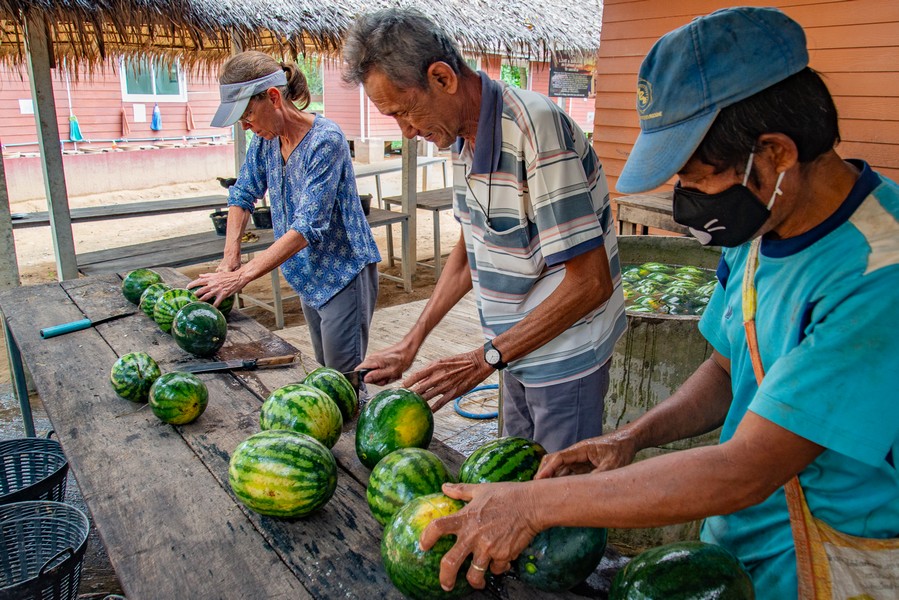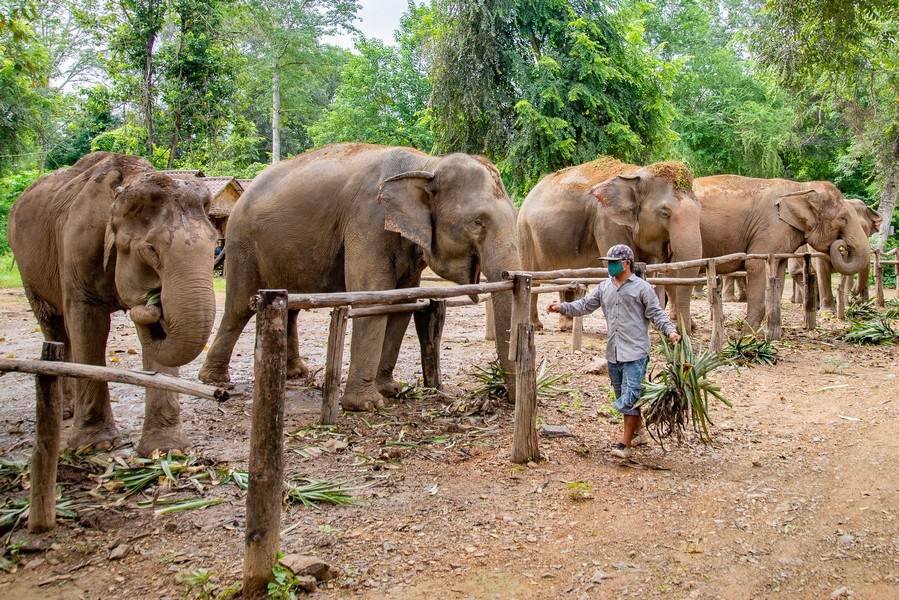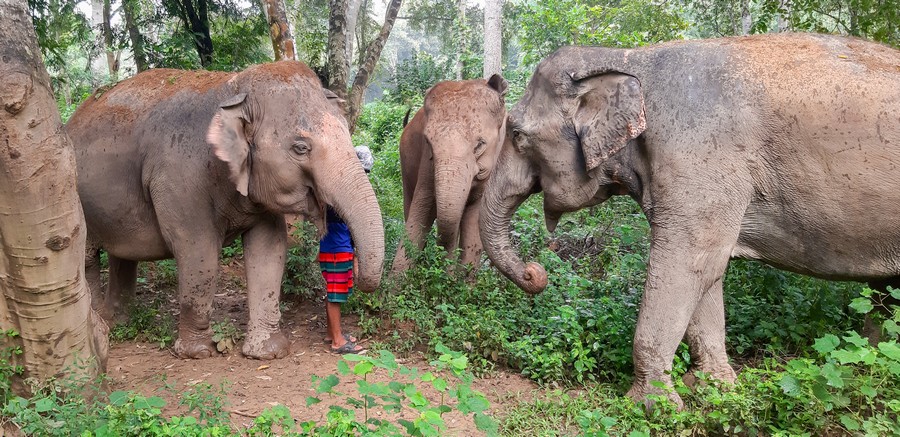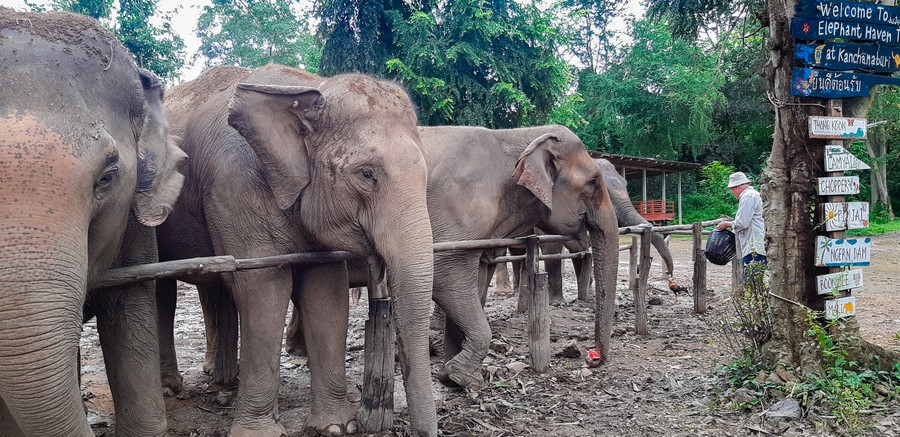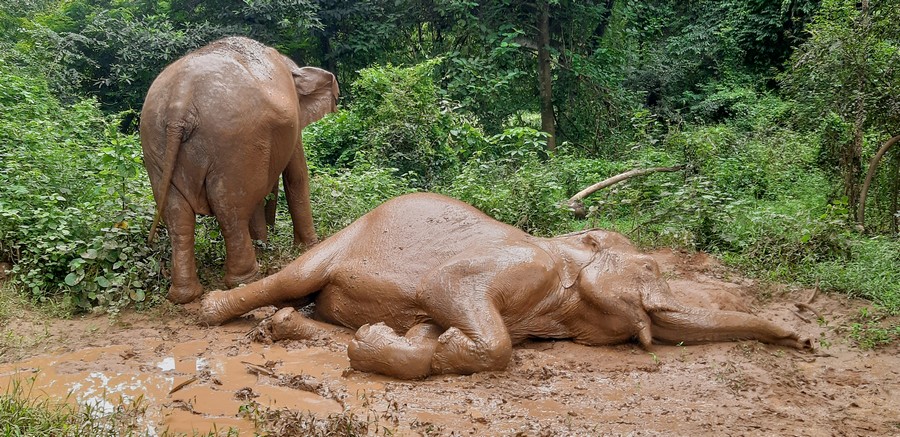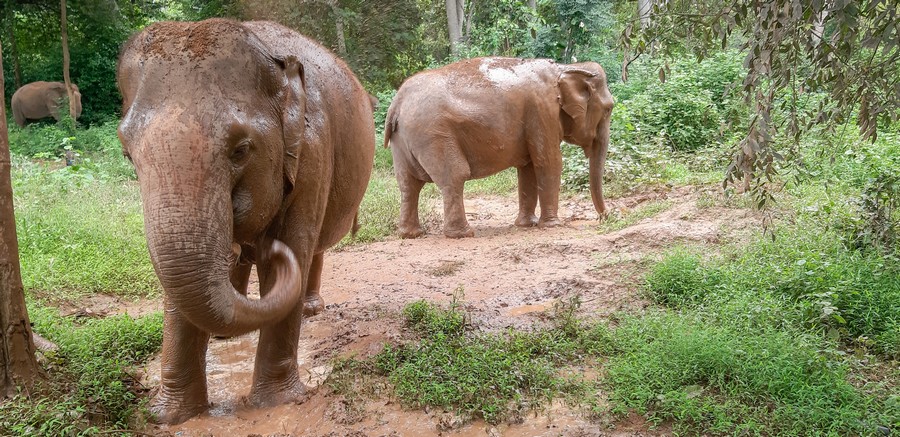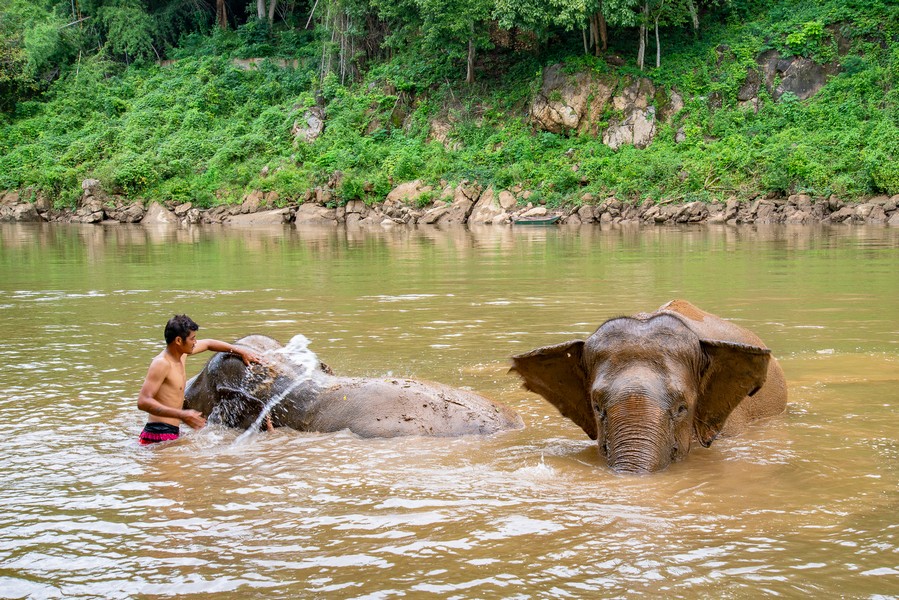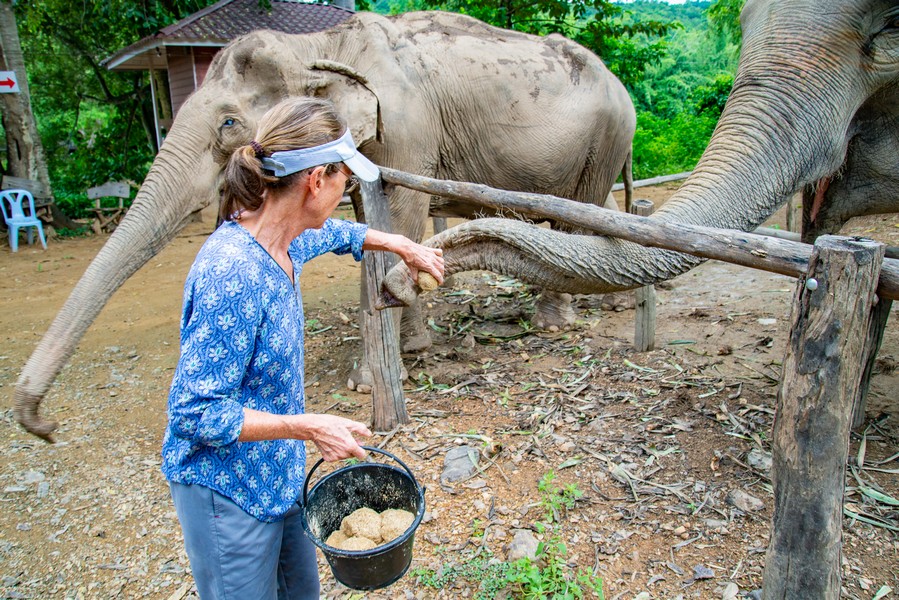Thai guide ‘Patrick’ announced “You’ll have seven elephants for company today. They’re aged from 65 to 28 and are all female.” And as he finished outlining the schedule for our day, he adds “We’ve been seven months without visitors, and you are our first guests. Thank you for booking our tour today.”
We had just settled into Elephant Haven’s comfortable minivan from our central Kanchanaburi pickup, and I needed to take a moment to absorb that information while trying to process the mixed emotions I was feeling.
There was definitely a sense of elation as I was finally visiting an elephant sanctuary that promised time with rescued elephants free to just be, well, elephants. And we would have seven of them for company. “How cool is that,” I thought. Then sadness took over – no customers for that many months. How has the business, its workers, the elephants, just everybody coped and survived?
So as our 45-minute drive to Elephant Haven progressed, we quizzed Patrick on all of these questions. We learn that with 50 acres of land, the sanctuary in the Sai Yok region west of Kanchanaburi has adequate space for the elephants, and a ready supply of natural vegetation to feed on. Some of the property is set aside for planted crops like banana and sugar cane for additional food supplies. The mahouts (elephant carers) have remained on site for the day-to-day attention and management of the elephants.
We hear how from 1997 to 2015 the elephants here, like so many across Thailand, were used for trekking, and tourism shows. We learn how the Sai Yok Elephant Park owner, working in conjunction with the Save Elephant Foundation founder Lek Chailert, made the decision to change the whole business model. Retiring the elephants, young and old, from their labours to live “saddles off” and “chains free,” roaming together in nature while foraging, playing in the mud, and swimming in the river. Thus creating Elephant Haven.
Guests now come to observe these gentle giants. To help staff care for their daily needs, and simply spend time in their company as they enjoy retired life. No more carrying or entertaining people for these great pachyderms.
Once on the ground at Elephant Haven, it was straight to work for us. We, are in essence, taking over some the tasks mahouts must do in the daily care of their charges. Given that an elephant consumes 150–300 kilograms of food a day and can feed up to 18 hours a day, a consistent supply is essential.
Dishing out pineapple plants is how we get to meet our new companions, and immediately glimpses of their personalities appear. The youngest ‘Chopper’ at 28 is in the middle and happy to grab what’s on offer while stealing plants from ‘Lamyai’ and ‘Pimjai’. Elephants we learn, are social animals, and these three keep together in their own little herd. While ‘Mali,’ ‘Boonmee’ and ‘Ngern Dam’ make up the other mini herd. At 68 ‘Thong Koon’ is the grand dame and tends to keep to herself, though her mahout is always close by to help and keep a watchful eye.
Our mahout duties don’t stop there. Next, we cut and quartered fresh watermelon sufficient to fill eight massive baskets. Then comes the making of rice-banana balls, as managing their diet is all part of the care process. These treats combine cooked rice with peeled and mashed banana, generous doses of salt and rice husks giving protein, fibre, calcium and carbs – all in one baseball-sized hit. And aren’t we well-received when it’s time to dish out these tasty treats.
For their well being, elephants need between seven and thirteen kilometres of exercise a day, and that’s how our morning proceeds, accompanying our new friends as they graze bushlands immediately adjacent to Elephant Haven’s riverside camp.
Patrick provides guidance on walking in safety when around the elephants, especially when walking behind. They can’t see you and may stop unexpectedly and we don’t want to spook them, he explains. They like contact with humans but also like space to feed and just do their thing. This can include turning massive tree trunks into scratching posts, and digging up the ground and using their trunk to cover their head and back with fresh soil. It seems that the dirt acts as sun protection and a form of natural cooling.
After an hour or so of wandering, we return to camp for a delicious yet simple Thai vegetarian lunch, chat some more with Patrick and take in some of the information on the partnership Elephant Haven has with Lek Chailert and her ‘Save Elephant Foundation.’
A native of far northern Thailand, Lek Chailert started working on elephant conservation in 1996, and now through her foundation, oversees rescued elephant sanctuaries in Chiang Mai, Surin, Cambodia, and where we are in Kanchanaburi.
For her work, Chailert has received numerous awards and recognitions, such as the Ford Foundation’s “Hero of the Planet” (2001), Time Magazine’s Heroes of Asia (2005), one of six Women Heroes of Global Conservation (2010), and the Responsible Thailand Award for Animal Welfare (2018). Her work was also featured in the 2018 movie documentary ‘Love & Bananas: An Elephant Story’ produced and directed by Hollywood star Ashley Bell.
Rested and fed, it was time to accompany our friends on their afternoon activities which starts with a visit to an elephant spa, one of their favourite mud baths. Chopper, Lamyai and Pimjai are certainly up for it while Mali, Boonmee, Ngern Dam and Thong Koon are happy to graze on new forest growth. As the youngest, Chopper can still get down and roll around in the mud while the others stand and use their trunks to spray mud all over themselves, and anything nearby.
Once satisfied with their mud play, they head off to the river for bath time. As Asian elephants can drink up to 200 litres of water per day, this river visit has very practical benefits for our jumbo friends. Guide Patrick once again provides some safety advice on how best to interact with them. It seems that Chopper can get a little too boisterous in the river, so her mahout looks after her. I can’t describe the jubilation I felt spending that time in the water and up so close with these giants. Unforgettable!
Our afternoon finishes with another feeding session for the elephants back at camp. Patrick says this is a way for guests like us to thank our new friends for their company, and they readily accepted our food offerings.
I’m aware and have read extensively on ‘elephant tourism’ and how in the western countries there are very prominent campaigns to stop elephant riding and the domestication of wild elephants in countries like Thailand. It’s a vexed and complicated issue.
Furthermore, is Elephant Haven’s saddle and chains off care model the best for these ‘retirees’? Who knows? What I can say is that our day there was one of the most satisfying elephant experiences I’ve had in all my time visiting and living in Asia.
For more information on what experiences are available visit, elephanthaventhailand.org phone (66)34-591-255 or email thaielephanthaven@gmail.com
You too may enjoy a unique and very personal experience like we had the privilege of.
About the Author
Michael & Vivien Cullen moved to Hua Hin Thailand 5 years ago from Brisbane Australia. They find delight in exploring the destinations, food and culture that Thailand offers in such abundance.



